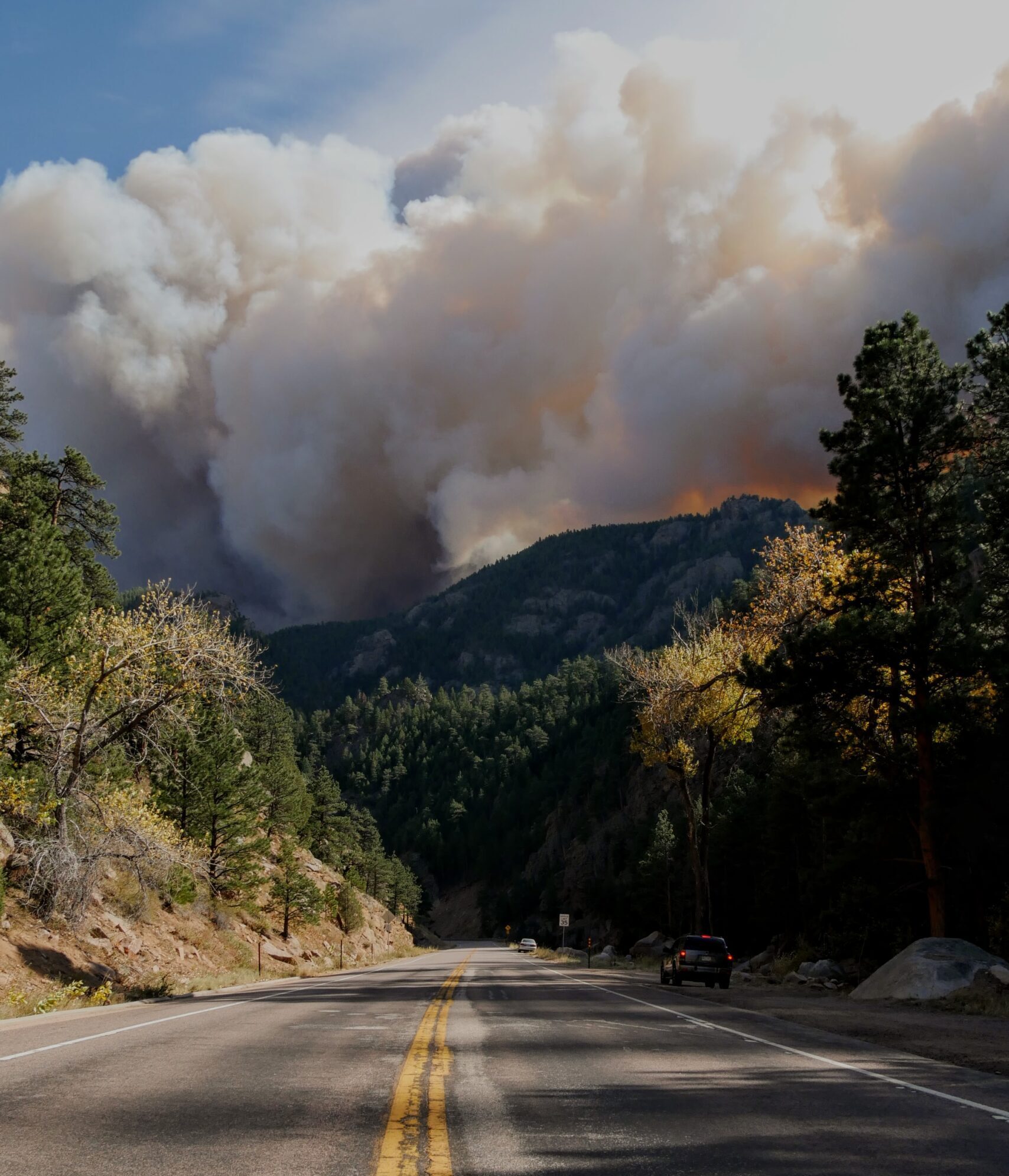

Typically, the North American wildfire season runs from spring to fall (although it varies by region).
However, as the effects of climate change increase, disasters continue to shirk the expected seasonal rules, occurring with ever-increasing frequency and intensity.
More specifically, climate change is having a significant impact on wildfires around the world and across the U.S.
According to the National Oceanic and Atmospheric Administration, “Climate change, including increased heat, extended drought, and a thirsty atmosphere, has been a key driver in increasing the risk and extent of wildfires in the western United States during the last two decades. Wildfires require the alignment of a number of factors, including temperature, humidity, and the lack of moisture in fuels, such as trees, shrubs, grasses, and forest debris. All these factors have strong direct or indirect ties to climate variability and climate change.”
Because of the changing landscape and timeline of fire season in North America, since 2022, CDP’s wildfire profile runs by calendar year and covers wildfires in Canada, Mexico and the United States.
The National Interagency Fire Center provides a monthly “National Significant Wildland Fire Potential Outlook” that details weather, drought conditions, past incidents and potential risk.
(Photo by Malachi Brooks on Unsplash)
Latest Updates
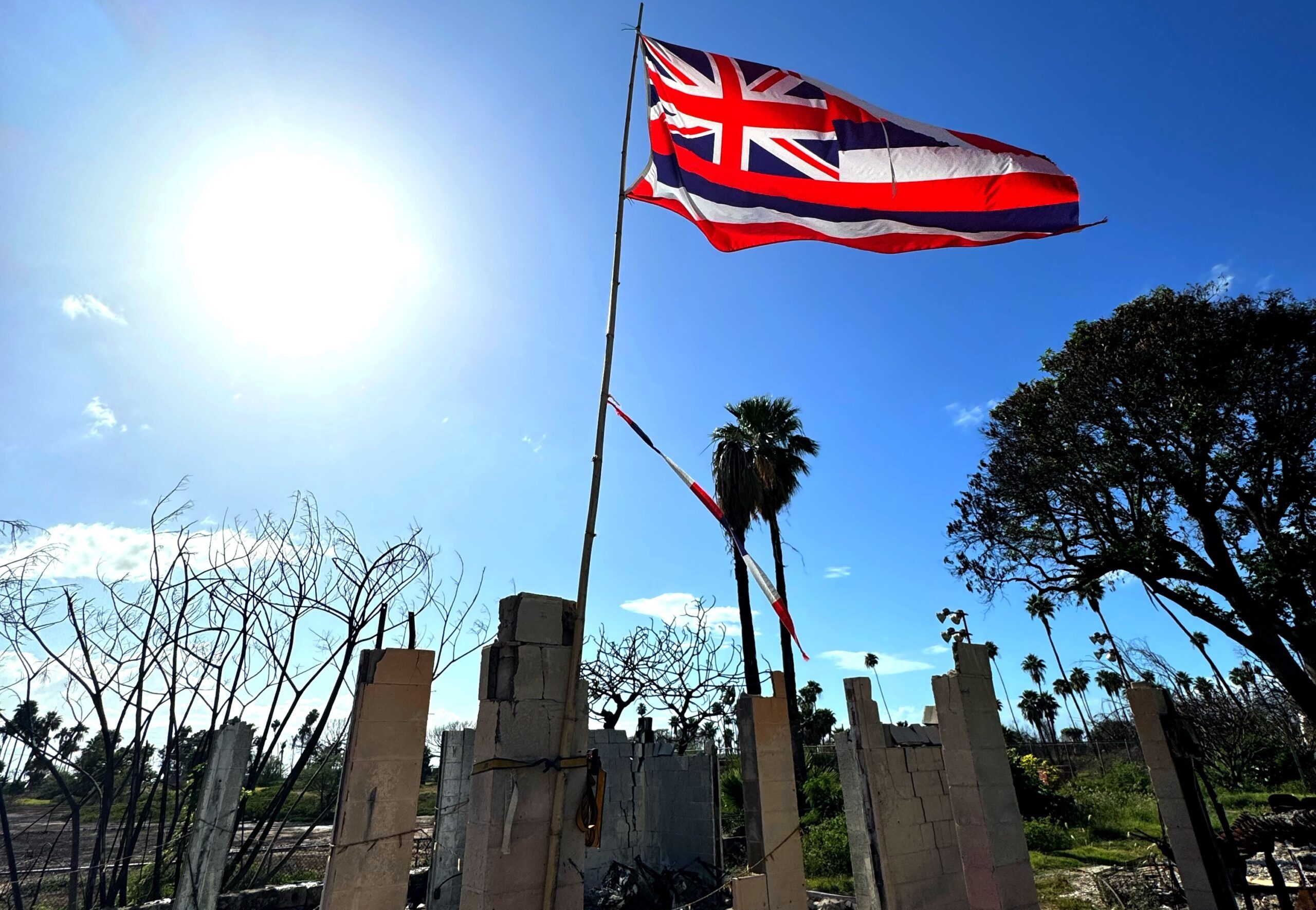
Disaster philanthropy cannot be deskbound: Takeaways from a trip to Lahaina
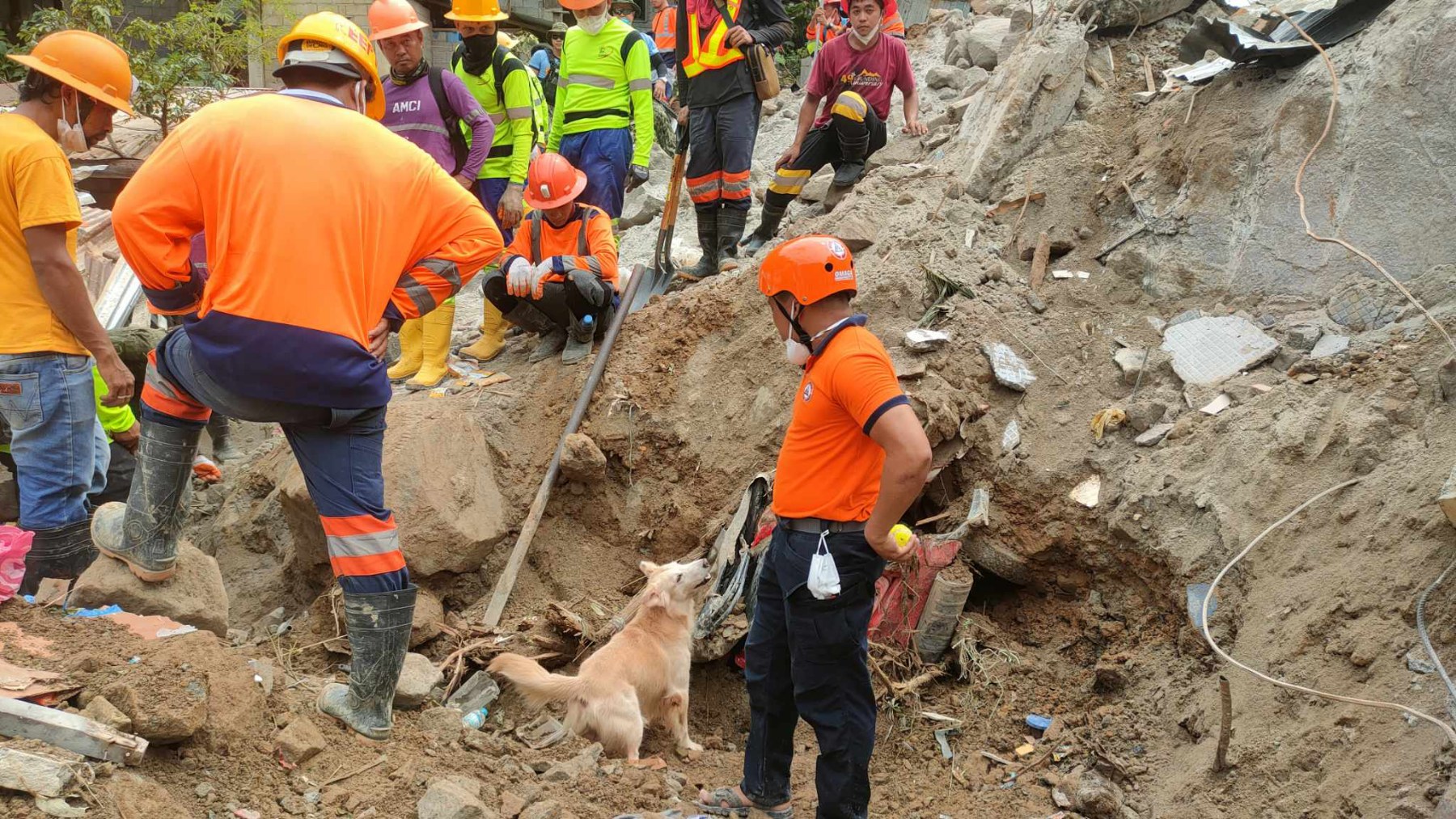
What we’re watching: Weekly disaster update, February 12
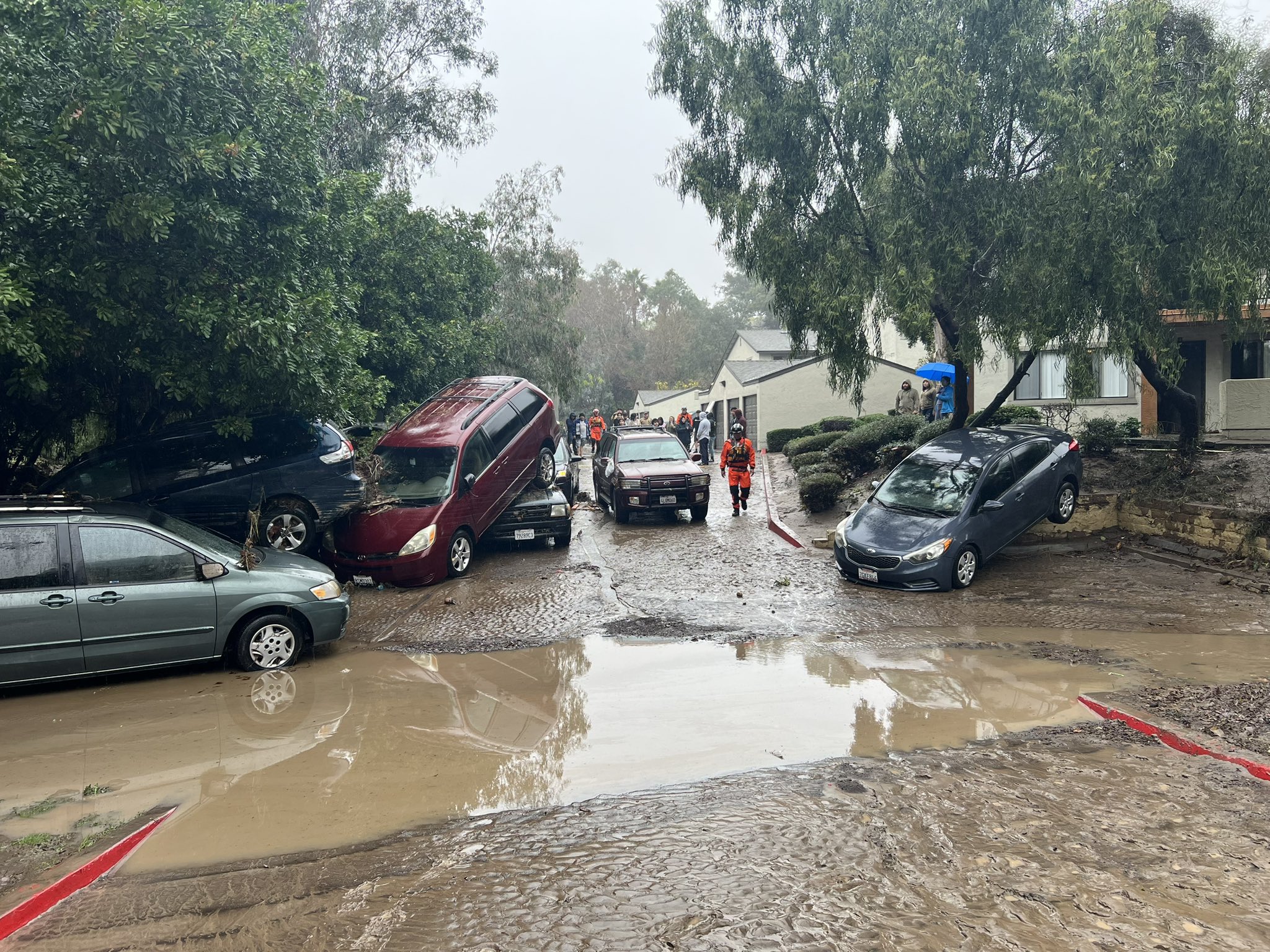
What we’re watching: Weekly disaster update, January 29
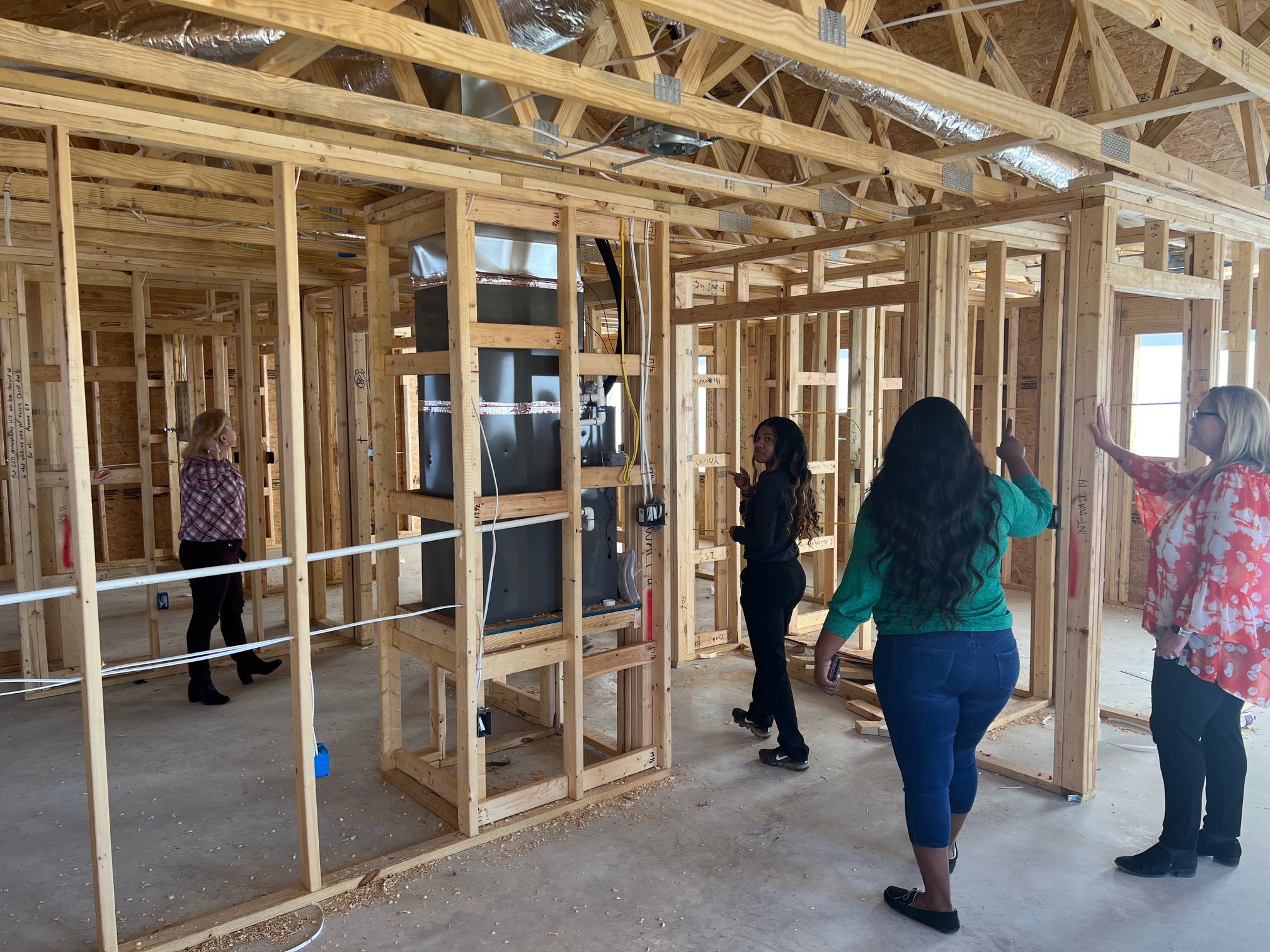
Announcing $2.12 million to support recovery from hurricanes, wildfires, tornadoes and more
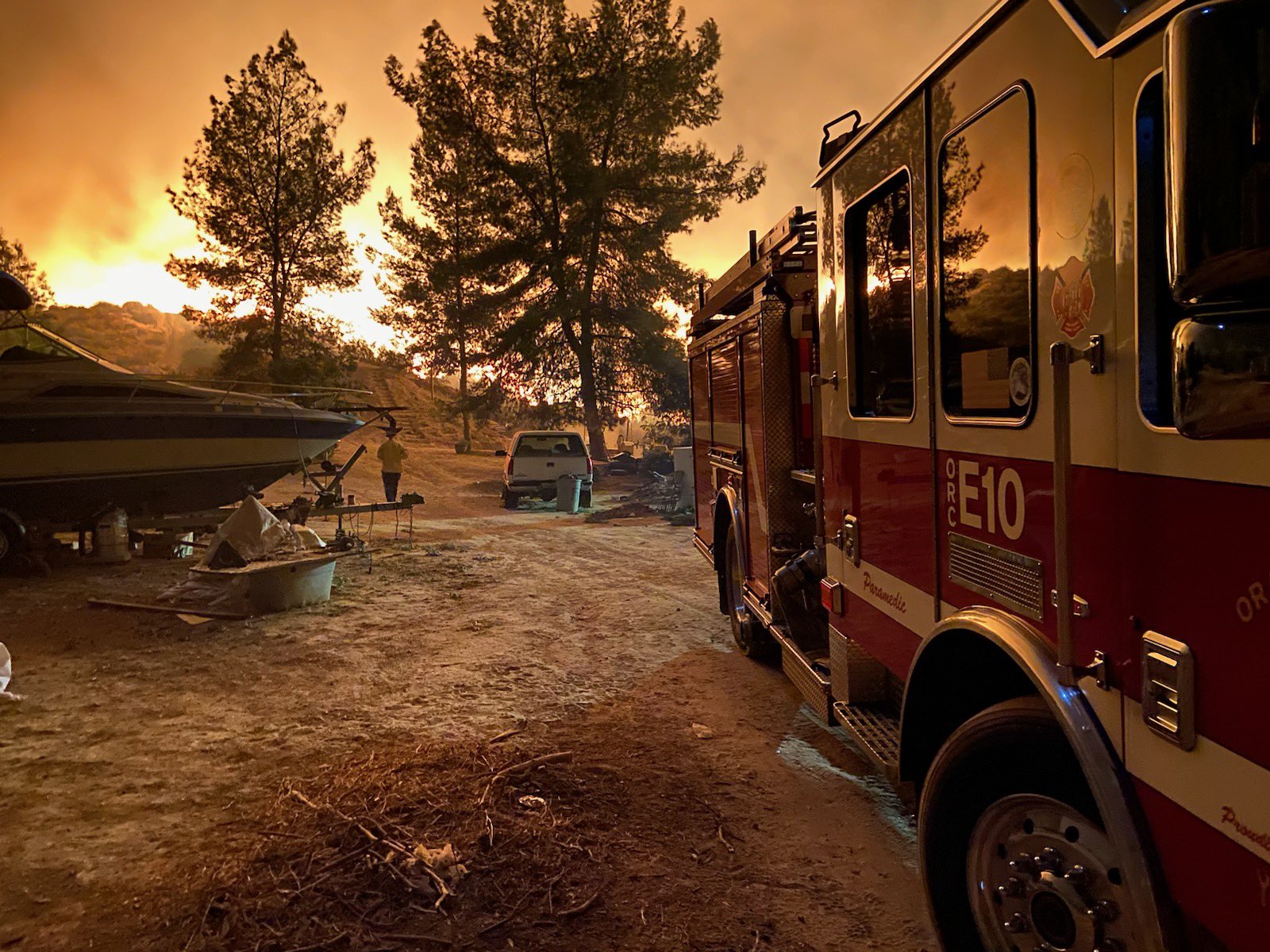
What we’re watching: Weekly disaster update, November 6
About our coverage
Though we would like to, we cannot share information on every fire across the continent. Below, you will find some general information about the most significant fires of 2023.
Our coverage focused on fires that significantly impacted the surrounding areas and environment and affected residents, especially at-risk populations.
United States
The National Preparedness Level – set by the National Multi-Agency Coordinating Group – was at Level 1 as of the end of December 2023 which means: “Minimal fire activity resulting in many available resources nationally.”
The National Interagency Fire Center (NIFC) statistics showed that in 2023, there were 56,580 wildfires burning 2.7 million acres nationally. These are both significantly lower than the 2022 statistics of 68,988 wildfires and 7.6 million acres burned. Interestingly, the reported number of wildfires was only slightly lower than the 10-year-average (61,407), whereas the acres burned was much smaller than the 10-year-average (7.2 million acres).
NIFC reported, “A total of 4,318 structures were reported destroyed by wildfires in 2023, including 3,060 residences, 1,228 minor structures, and 51 commercial/mixed residential structures. In 2023, the majority of structures were destroyed in the Northern California Geographic Area, including the 2,308 residences destroyed in Maui.”
California
Editor’s note: In California, we usually focus on fires that exceed 50,000 acres. Three fires in 2023 – York, SRF Lightning Complex, Smith River Complex – exceeded 50,000 acres burned, causing four deaths and destroying 52 buildings.
Atmospheric rivers, heavy rains, flooding and increased snowpack reduced the severity of early fires in California in 2023.
There were three firefighter fatalities, one civilian fatality, 19 structures damaged and 52 structures reported destroyed in 2023. The three firefighters died on Aug. 6, 2023 after two helicopters collided while fighting a fire in Cabazon, California. A 71-year-old man was found deceased in the driveway of his home on Aug. 18, 2023 in the Head Fire.
You can support CDP’s response to the wildfires by donating to our California Wildfires Recovery Fund.
Related reading
Support recovery
Hawaii
Devastating wildfires burned in Hawaii (Hawaiian: Hawai’i) the week of Aug. 6, 2023. The largest of these fires – the Lahaina fire on Maui – was the worst natural hazard disaster in Hawaii’s history and the fifth-deadliest wildfires in the U.S. in recorded history and the first fire since 1918 to reach 100 deaths. The unique nature of the fires – a combination of drought, lightning and Hurricane Dora – was highlighted in this Reuters interactive story.
Maui suffered 101 confirmed fatalities and two people remain missing. Officials have experienced significant difficulties with identifying remains. The ages of the fatalities range from 7 to 97 years old, with two-thirds of them people aged 60 or older. According to the Maui police’s after action report, of the 100 fatalities included in the report one occurred in the ocean, three at the hospital, 15 inside vehicles, 39 outdoors but not in a vehicle and 42 inside buildings (many in homes).
Nearly all of Lahaina’s physical infrastructure was destroyed, including sacred spaces and historic structures dating back to the 1700s. The initial estimates of damage to rebuild the town of Lahaina alone – not including other impacted communities on Maui – total at least $5.5 billion. Per capita damage estimates total $33,000, and this figure continues to rise given the increasing cost of construction materials and skilled labor. Experts estimate recovery will take decades and the costs will far outweigh Maui County’s annual budget of $1 billion.
At least 2,207 buildings were damaged or destroyed; 86% of these were residential.
FEMA approved 7,024 applications and awarded nearly $43.41 million in assistance through the Individuals and Households Program (IHP) and $118.93 million in Public Assistance (PA) Categories A-B.
According to 2020 census data, Hawaii’s average household size was 2.95 people, and 8.5% of households were overcrowded. Kauai and Maui counties had the highest rates of overcrowding at just under 10%, and Maui’s population was approximately 164,000 at the time of the fire. Hawaii also has the largest percentage of multi-generational households – defined as households “containing three or more generations” – at 9.1%.
Based on these figures, the 7,024 approved applications for FEMA assistance account for nearly 21,000 people. Per anecdotal information from disaster recovery field staff, FEMA typically deems 10-12% of the total number of applications for assistance it receives as “eligible.” In theory, if FEMA received 58,000 applications for assistance and each application represented one household with an average size of 2.95 people, it is possible that every single resident on Maui was impacted by the wildfires. Recognizing the mental and emotional impact of living with such devastation, this is likely not far from the truth.
According to The Guardian, “The fires in Hawaii [were] unlike many of those burning in the western US. They tend to break out in large grasslands on the dry sides of the islands and are generally much smaller than mainland fires. Fires were rare in Hawaii and on other tropical islands before humans arrived and ecosystems evolved without them, which means that great environmental damage can occur when fires erupt. Fires remove vegetation. When a fire is followed by heavy rainfall, the rain can carry loose soil into the ocean, where it can smother coral reefs.”
You can support CDP’s response to the wildfires by donating to our Hawaii Wildfires Recovery Fund.
Related content
Watch the webinar
Support recovery
Louisiana
In Louisiana, one of the wettest states in the U.S., 600 fires burned in August alone (78% of the state’s average annual total).
Governor John Bel Edwards stated via X (formerly Twitter), “Our state has never been this hot and dry, and we have never had this many fires.”
According to researchers at Louisiana State University, wildfire risk in the state is expected to increase 25% by 2050, with the magnitude of property damage poised to grow by more than 100%, fueled in major part by climate change.
Montana
In 2023, the Montana Free Press reported that “1,536 fires burned 116,314 acres in Montana this season, and 48% of those fires were human-caused…as of Sept. 15, the DNRC [Department of Natural Resources and Conservation] had spent $39.2 million on fire suppression in 2023, and the remaining fire fund balance totaled $109.3 million.”
The most expensive fire was the Colt Fire, which kicked off the season in July and ultimately burned 7,000 acres and cost $32 million to suppress. One of the biggest fires was the River Road East Fire which began on Aug. 18, 2023, near the Lolo National Forest. It destroyed 64 structures, including 16 homes, and burned more than 17,000 acres.
Oregon
The Oregon Department of Forestry declared an end to the 2023 fire season with a total of 1,909 fires, burning a total of 190,507 acres, a relatively light season compared to previous years, particularly 2020 when multiple fires devastated over 1 million acres.
Kentucky
Nearly 900 fires burned 14,530 acres in Kentucky in 2023. Most notably, on Nov. 9, Kentucky Governor Andy Beshear declared a rare wildfire-related state of emergency for active fires in Eastern Kentucky. The same area was devastated by severe flooding barely a year ago in July 2022 that killed 45 residents. [A documentary film by the Center for Rural Strategies, “East Kentucky Flood”, details the community impact of the flood.]
Disasters in rural communities, in many cases, do not garner significant media attention. As a result, and as evidenced by the July 2022 floods, rural residents do not have access to necessary resources such as community-specific weather forecasts and broadband internet access, making preparedness and recovery efforts even more difficult.
Other areas in the U.S. South
Toward the end of 2023, multiple states in the southern U.S. have experienced wildfires amid dry conditions brought on by prolonged drought.
Multiple fires in Virginia prompted Governor Glenn Youngkin to declare a state of emergency on Nov. 7 that was effective for 30 days. The Matts Creek wildfire burned in the James River Face Wilderness, and smoke from that blaze has became a health issue for the communities across the region.
Two-thirds of Louisiana faced exceptional drought conditions in 2023, the highest recorded by the Drought Monitor in 23 years. The drought plus extreme temperature led to several large wildfires, something unusual for the state to contend with.
Canada
On June 27, Canada surpassed the record set in 1989 for the total area burned in one wildfire season. Record heat affected even the typically cooler northern territories. Firefighters from several countries, including United States, Australia, New Zealand, France, South Africa and Costa Rica, helped Canada battle fires in 2023.
According to the European Union’s Copernicus Atmosphere Monitoring Service, Canada’s wildfires released 360 million tons (327 million metric tons) of carbon into the atmosphere as of Aug. 23, 2023. Of that, just over 106 million tons (97 metric tons) came from the Northwest Territories alone, which is 277 times more than humans caused in 2021.
As of Dec. 7, 2023, total carbon emissions eclipse 2.2 billion tons, nearly triple the average annual carbon emissions of the entire country.
As of Dec. 7, 2023, the CIFFC has reported 6,679 fires and 45.7 million acres burned. CIFFC statistics showed 258 active fires, with 29 out of control, 74 being held and 155 under control. The amount that burned in 2023 was about 5% of Canada’s forests. Annually, the world loses 17.3 million acres to deforestation, so Canada’s fires alone account for more than double that typical loss.
Six people died in 2023. Two of the deaths were civilians: a 9-year-old boy in British Columbia whose asthma was exacerbated by the smoke and a hospitalized patient who died during the Yellowknife evacuation. The hospital said his death was “expected.” Four of the fatalities were among people engaged in firefighting activities.
On July 13, 2023, 19-year-old nursing student Devyn Gale was trapped under a tree while fighting a wildland fire in British Columbia. Adam Yeadon, a 25-year-old firefighter in the Northwest Territories, was killed fighting a small fire near Fort Liard. On July 20, a 41-year-old helicopter pilot delivering water to the fire died after his helicopter collided with the ground. On July 28, a 25-year-old firefighter from Ontario died in northern British Columbia while fighting the largest fire in the province’s history.
Over the course of the fires, nearly 200,000 people were evacuated for some length of time.
Alberta, Canada
In Alberta, there were more than 1,124 fires in 2023.
In the Oct. 30, “Wildfires of Note” from the Government of Alberta, there were no wildfires of note, meaning a wildfire that is highly visible or poses a potential threat to public safety. This was the last date this document was updated in 2023.
British Columbia, Canada
British Columbia saw 2,253 fires in 2023. Wildfires burned a record amount of land (7.03 million acres) in the province, more than doubling the previous record set in 2018 (3.35 million acres).
The largest-ever fire in British Columbia, the Donnie Creek Blaze, burned an area larger than Prince Edward Island. The fire burned on the traditional territory of the Blueberry River, Prophet River and Doig River First Nations and has burned traplines, important ceremonial landmarks, massive amounts of timber, blueberries and other berries, and habitat for deer, bison and moose. This will cause significant disruptions to Indigenous communities and the lumber and milling industries. The fire burned about 1.4 million acres or 2,200 square miles, and is still burning. It may temper over the winter and then reemerge in the spring.
Northwest Territories (NWT), Canada
In Canada’s far north, the last update was Oct. 18, at which time there were 91 active fires and 303 for the full year.
NWT has a population of only 45,000 people. Two-thirds of this northern, near-Arctic territory was displaced by wildfires at least once during the summer, including the territory’s capital city, Yellowknife, home to 20,000 people. All evacuees except those from Enterprise have been allowed to return home. Almost 100 million acres have burned in total.
Quebec, Canada
As of Dec. 7, 2023, the province had reported 564 fires. The 10-year average to date in Quebec is 438.
Over 13 million acres of land burned, compared to the 10-year average of 39,051 acres.
There are several areas of ongoing support that are typically needed in the recovery phase. These include rebuilding homes or repairing damage, soil remediation, temporary housing, physical and mental health, assistance for survivors in navigating disaster recovery resources, community and economic development, agricultural support, and livelihood/income support.
Funders should also consider the following options to support fire-impacted communities now and to reduce the impact of future fires.
Hawaii recovery
Lahaina is particularly important for Hawaiians as a cultural and political center. It was the capital city from 1820 to 1945 and the royal residence of King Kamehameha III, the king who unified Hawaii. Many kings and queens are buried in the Wainee Church (Waiola). The church is 200 years old and made of stone, but it was pictured in flames during the wildfires.
Lahaina was also the economic engine of western Maui. Lahaina’s historic Front Street, home to bars, stores, restaurants and the largest banyan tree in the U.S., was ravaged by fire. According to the Maui Economic Development Board, “tourism is the economic engine of Maui” with 80% of the economy (or $4 out of $5 generated) coming from tourism. Tourism made up 75% of private sector jobs and 51% of all jobs on the island. And while service industry jobs top the list of highest annual salaries, they have also failed to keep up with rising costs of living. Additionally, tourism jobs can be unstable – as COVID-19 showed – and seasonal.
Residents of Maui, similar to the disaster experience of residents of Acapulco de Juarez after Hurricane Otis, know two version of Maui: the tourist Maui and the local, historic communities of Maui. Funders should be aware that, while tourism is the main economic driver, there are many other less visible but not less important needs that will present themselves over the next few years as recovery efforts continue to unfold.
After the fire, investors and developers quickly reached out to residents who lost their homes with offers to buy. This is a common occurrence after disasters, which creates a risk of post-disaster gentrification. Fast cash may be attractive for those who do not have insurance. Some residents of Lahaina reported receiving predatory, unsolicited purchase offersfor their land. Governor Josh Green signed an emergency proclamation making it illegal to solicit people to buy their land in ZIP codes 96761, 96767 and 96790.
On Aug. 19, 2023, Nā ʻOhana o Lele, a coalition of community members in Lahaina, released a statement calling on Governor Josh Green to meet three demands for the town’s recovery, including giving the community time to grieve, putting the community first in any planning process and amending the Emergency Proclamation to ensure that Chapter 92 Sunshine Law remains in full force.
Housing in Hawaii looks different than in many other places, with multigenerational families all sharing one home, sometimes numbering over two dozen people. Housing was already expensive and in short supply prior to the fires and, because housing is often multi-generational and passed down from generation to generation, there may no longer be a mortgage and therefore no requirement for insurance. People will require temporary housing, and, because of the existing shortage of affordable housing, some Hawaiians may be forced to live off-island for an unknown period of time until their homes are rebuilt.
In Hawaii, the nature of an island recovery is going to present a challenge, one exacerbated by the unique aspects of wildfire recovery. Anything brought onto an island must be shipped by air or water, thereby increasing costs. There is only one major port, which is located in Honolulu. From there, shipping containers are loaded onto smaller ships owned by one of the two companies available to ship within the islands. The Maui port is unable to receive large ships from the mainland.
Trash or debris may need to be shipped off the island, or space must be made on the island to store/remediate it. This can be incredibly costly and time-consuming. Mahina Martin, the Maui County Chief of Communications and Public Affairs, told Hawaii News Now that it will cost billions of dollars to ship the more than 400,000 pounds of debris off island; a process that will take years. A temporary landfill has been established in Olowalu, however local residents are protesting the location, concerned both about the environment and fears it will become a permanent site.
As of Jan. 26, 2024, 1,795 of 2,108 eligible property owners had given permission to the Army Corps of Engineers clean up the debris on their properties, the next step toward rebuilding. The county is urging people to register by March 2024. About 313 properties in Lahaina, more than 100 of them commercial units, have not submitted forms. This represents over 50% of the commercial properties who have not signed up, compared to only 15% missing for residential properties. The Corps has already completed the removal in Kula where 100% of 26 property owners signed up.
Some properties were cleaned up by the U.S. Environmental Protection Agency (EPA). Unlike the Corps, the EPA did not need permission because it focused on areas that posed a safety or public health concern because of toxic and hazardous materials.
It is estimated that the debris clean-up process will cost at least $200,000 per property and take at least a year. The Corps does not charge to do this removal, although any insurance payments received for debris removal must be given to them.
The more commercial and residential property owners who sign up with the Corps, the more straightforward and efficient debris removal will be. It is estimated that there will be 600,000 cubic yards of fire debris removed in the 5-square-mile area.
After Hurricane Katrina, 30 years of garbage/debris was generated. While Maui has a smaller footprint, being an island will make remediation more challenging.
Following Hurricane Dorian in Okracoke, North Carolina, it took several months for debris to be cleaned up and removed from the streets. An article published five months after the storm stated: “Debris from roughly 300 ruined homes and businesses has totaled more than 54,000 cubic yards. A dump truck hauls about 10 cubic yards depending on the load. So far, 2,801 appliances including refrigerators and washing machines have been hauled away.”
Similarly, in the first six months after Hurricane Dorian hit the Bahamas, debris removal costs reached $20 million, and a comprehensive waste management plan did not exist.
Additionally, after a fire that burned homes, vehicles, appliances, etc., there is a need to remediate the soil from toxins. This can take several months; it took upwards of a year after the Paradise Camp Fire in 2018. This means that people may not be able to access their properties (except to look for belongings) for months or more.
The ecology of the island will also need to be considered. The island is, and has been, a very environmentally sensitive place for years. With risks from rising sea level, rebuilding needs to consider protection from weather and sea rise. It should also explore how to rebuild with fire-resilient materials and include native plantings.
Given the number of deaths, mental health and trauma support will be a significant need for many years to come as well.
President Joe Biden issued a disaster declaration for Hawaii (DR-4724), supporting loans for businesses and grants for housing and repairs. Individual assistance has been approved for Maui County, and Public Assistance (Categories A and B) was approved for Maui and Hawaii counties.
FEMA approved 7,044 Individual Assistance applications for a total commitment of $44.77 million as of Feb. 19, 2024. While the amount may change in the future, applications are closed. The only new assistance being issued would be for appeals and for additional needs. Almost $164 million has been obligated by FEMA for Public Assistance ($111 million in Emergency Work and $46 million in Permanent Work) as of Feb. 19, 2024.
As a community with high rents and a strong family structure, many people live in family housing with numbers as high as 10-30 people per household. The Maui United Way issued $1,000 per adult who lived in the burned areas. This allows multiple adults living at one address to receive assistance, something that government processes did not allow at that time, as assistance was for households only. There are additional funds making payments to individuals and families as well.
The Hawaii Community Foundation’s Maui Strong Fund had received $167 million for relief and recovery, as of December 2023. This is the highest amount of donations issued to a single organization that CDP is aware of. The Maui fires have received the highest amount of philanthropic financial support for any single natural hazard disaster that CDP has seen.
Long-term recovery needs – Case study: Camp Fire in Paradise, California
Nov. 18 marked the five-year anniversary of the Camp Fire in Paradise, CA – one of the top five deadliest wildfires in U.S. history – that burned over 153,000 acres, killed 85 people and destroyed nearly 19,000 structures approximately 11,000 of which were residential (roughly 90% of the community’s housing stock).
At the time of the fire, 26,000 people lived in Paradise. Five years later, the community has rebuilt 2,128 homes (roughly 19% of what was destroyed), and the population has reached 9,100 (around 35% of the pre-fire population). Though experts have stated that recovery in Paradise will last for decades, Marc Mattox, the town’s public works director, says that rebuilding and population growth has outpaced expectations. Unfortunately, only six of the town’s 36 mobile home parks – the main source of housing for many low-income and older adults – have been rebuilt to date.
The Camp Fire recovery efforts, though still actively underway, have been relegated to the back pages of many news outlets until an anniversary date rolls around. Paradise is a prime example of the need for and importance of long-term, sustained funding support for recovery in addition to short-term, immediate injections of funding for disaster response and life-safety action.
Award loans and grants for rebuilding damaged homes and businesses.
Support local agencies on the ground throughout the disaster life cycle, especially those working with marginalized communities.
Those in already precarious situations — such as older adults, undocumented and mixed-status families, people with physical or mental health challenges, and people living in poverty — may find their circumstances worsened in the face of disaster.
Organizations working with at-risk populations must have plans in place to mitigate the disaster’s impacts. These organizations are better informed about local culture than outside entities and will be on the ground for years to come.
Fund drought mitigation efforts.
These may focus on sustainable agriculture, water conservation or land use. According to the National Drought Mitigation Center, an emerging area for research is land use patterns that “maintain the integrity of watersheds and that have a smaller paved footprint result in greater resilience in the face of drought.”
Invest in public awareness and educational campaigns as well as dissemination of promising practices in wildfire and drought mitigation.
Simple efforts such as clearing flammable materials from 100 feet around structures may help prevent property damage. Fires can also be started by misuse of equipment, such as grills, that can be averted with simple preparedness strategies.
Assist businesses in developing business continuity and disaster recovery plans to reduce economic impact.
These plans should include contingencies for displaced workers, back up of data and alternate facilities for continuing operations in the event of property damage.
Consider the needs of volunteer fire departments.
As volunteers, they often lack the structural support of larger departments, and their resources may have been depleted during the wildfire.
Support the creation of “smart growth” efforts.
Smart growth efforts and smart planning can help mitigate wildfires or prevent them altogether.
Mental health
Mental health is always a significant issue following fires, especially those that include a massive loss of life. Funders can support organizations, particularly those that will be on the ground long-term, to provide mental health services to their communities for years to come. This should be broader than traditional therapists, as some ethnic or religious communities will want to ensure that they receive services that are culturally competent and supportive.
In Hawaii, traditional Hawaiian beliefs are different than those of Western cultures, so care will need to be provided by Native Hawaiian groups or organizations. Funders could also consider providing additional funding for shelters or services for people dealing with Intimate Partner Violence (IPV), and for rehab facilities or services for people with addictions. IPV and addiction issues often increase after disasters.
CDP’s California Wildfires Fund provided a grant to La Familia Sana, who created a mental health outreach and service provision program for the underserved Latinx residents in their service area.
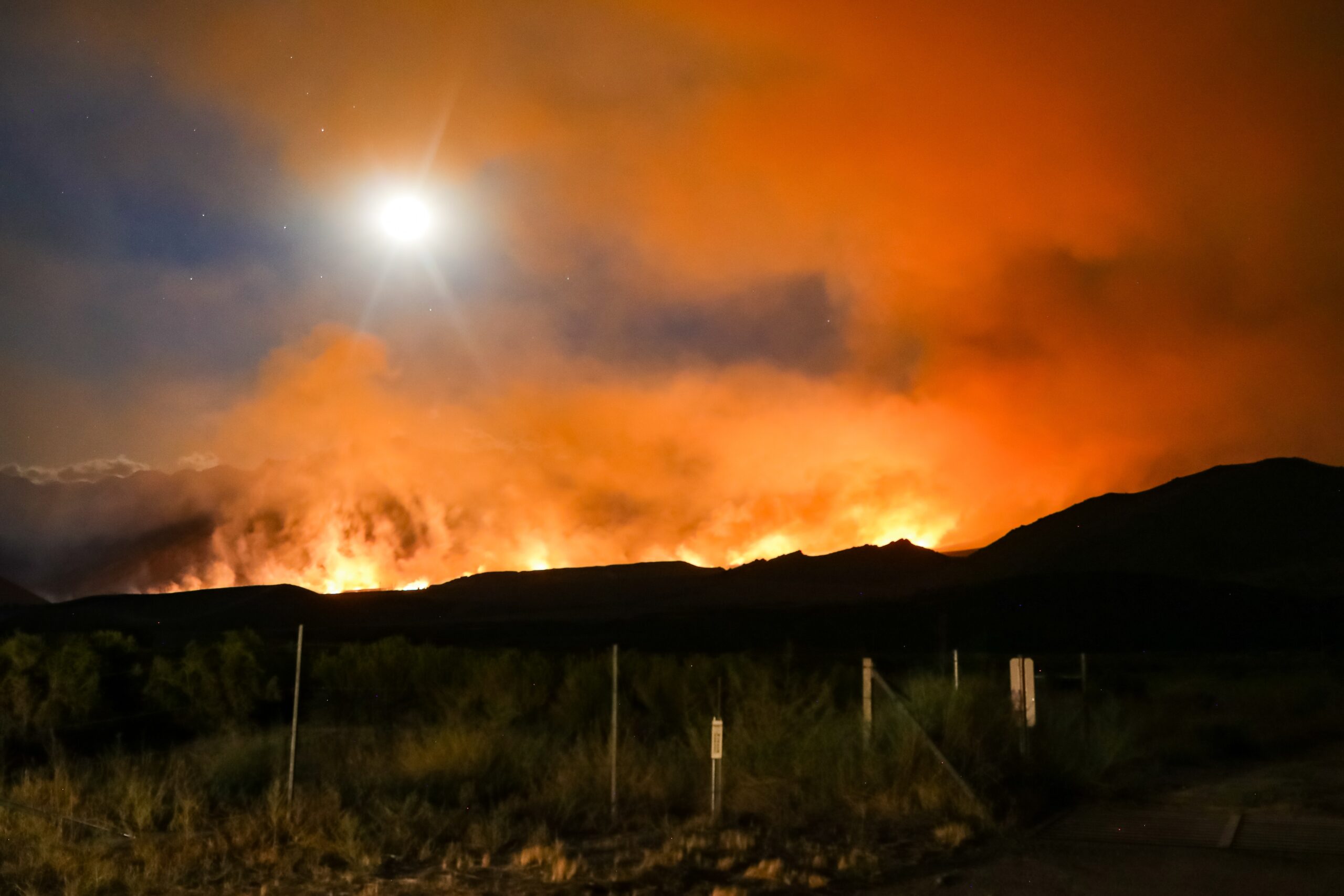
CDP has specific funds for wildfire needs in California and Hawaii. In addition, our Disaster Recovery Fund provides support for wildfire-affected areas in the remainder of the United States, and our Global Recovery Fund provides support for Canada, Mexico and other countries.
Contact CDP
Philanthropic contributions
If you would like to make a gift to our Hawaii Wildfires Recovery Fund, California Wildfires Recovery Fund, Disaster Recovery Fund or Global Recovery Fund, need help with your disaster-giving strategy, or want to share how you’re responding to this disaster, please contact development.
(Photo by Ross Stone on Unsplash)
Recovery updates
If you are a responding NGO, please send updates on how you are working on recovery from this disaster to tanya.gulliver-garcia@disasterphilanthropy.org.
Note: If you are an individual who was affected by the disaster, we encourage you to contact your local 211 to see what resources are available in your community.
We welcome the republication of our content. Please credit the Center for Disaster Philanthropy.
Philanthropic and government support
Through funding from Google and the CDP Disaster Recovery Fund, Seeding Sovereignty received a grant of $61,065 to provide community care and relief in the wake of traumatic wildfires in the Queer, Trans, Black, Indigenous People of Color populations they serve in the wake of the New Mexico wildfires.
From the California Wildfires Recovery Fund:
- CDP awarded a $200,000 grant to Northern Valley Catholic Social Service Inc. (NVCSS) to increase wildfire resilience levels, while reducing associated risks among vulnerable populations within the NVCSS service region.
- CDP issued a $300,000 grant to Northern California Grantmakers (NCG) to expand their disaster resilience investment in the philanthropic sector. NCG is working with CDP to convene, educate, inform and help strategically direct philanthropic giving in light of state and local government investments in this area to support mitigation projects throughout the state to build a more prepared and resilient California.
- CDP provided a $99,734 grant to Corazon Healdsburg (Scopa Has A Dream Inc.) to provide wildfire disaster preparedness and prevention training for clients. By providing emergency disaster kits and support for renters insurance as well, clients will be better able to face future wildfires and be more resilient.
From its now-closed Colorado Wildfires Recovery Fund, CDP issued a grant of $309,686 to Impact on Education. The grant allowed Impact on Education to expand its mental health advocate program at seven schools located in Louisville, Superior and Boulder County where the Marshall Fire devastated communities.
Several of the fires have received a FEMA Fire Management Assistance Grant (FMAG) to assist in firefighting and response cost recovery.
President Joe Biden issued a disaster declaration for Hawaii (DR-4724), supporting loans for businesses and grants for housing and repairs. Individual assistance has been approved for Maui County, and Public Assistance (Categories A and B) was approved for Maui and Hawaii counties.
As of Dec. 7, 2023, 6,860 Individual Assistance applications have been approved for a total commitment of $38.4 million. Every family affected by the fire was scheduled to receive $700 in other needs assistance checks ($8.2 million of the total to date). However, many people on Maui have criticized this amount. As a community with high rents and a strong family structure, many people live in family housing with numbers as high as 10-30 people per household. By contrast, the Maui United Way has begun to issue $1,000 per adult who lived in the burned areas. This allows multiple adults living at one address to receive assistance, something that the FEMA process does not allow, as it addresses household assistance only.
Even with the large number of people in a household, the number of people registered for FEMA is very low, considering the amount of damage. There are rumors circulating in the community that signing up for FEMA (or even Red Cross assistance) means signing away the rights to your land and your home. While this is not true, the belief persists in many communities. There are also extensive conspiracies stating that the fires were set deliberately. These theories feed into fears of a land grab.
FEMA Administrator Deanne Criswell, U.S. Fire Administrator Dr. Lori Moore-Merrell and U.S. Small Business Administration Administrator Isabella Casillas Guzman visited Maui to assess the damages and to determine how FEMA and the federal family of agencies could assist.
President Joe Biden and First Lady Dr. Jill Biden visited Maui on Aug. 21, 2023. The president said, “We’re focused on what’s next — that’s rebuilding the long-term — rebuilding for long-term — and doing it together to help get us back on our feet,” the president said. “To rebuild the way we want to rebuild, by making sure your voices are heard, but respecting your traditions, by understanding the deep history and meaning of this sacred ground, and establishing your community not to change its character, but to reestablish it.”
Additional Federal, State and Voluntary Actions (from FEMA)
- “The U.S. Department of Agriculture’s Food and Nutrition Service approved Hawaii’s request for impacted Child Nutrition Programs and Supplemental Nutrition Assistance Program benefits.
- American Red Cross and Maui County continue to staff and support six shelters where food, water, hygiene kits and other essential resources are provided to survivors who are unable to return home. FEMA survivor assistance specialists are located at the shelters helping people register for federal assistance. Those affected by the fires may visit a Red Cross shelter to get a hot meal, charge their phone and access other essential support. Red Cross and the state are moving people into hotels and out of shelters as fast as possible.
- Local and national Voluntary Organizations Active in Disasters (VOADs) are providing emergency assistance to survivors. Those seeking to donate to the recovery efforts, can do so by visiting hawaiistatevoad.org.
- The U.S. Army Corps of Engineers is helping clear roads, stabilizing electric service and working with the Environmental Protection Agency on the removal of hazardous waste essential to recovery work in the affected areas.
- As fire containment efforts continue, FEMA continues response efforts. This includes search and rescue operations, including canine search teams. In addition, 17 specialists from the Disaster Mortuary Operational Response Team are on Maui, with additional teams enroute to assist the state.”
On Aug. 21, 2023, Heather Cox Richardson summarized federal activations in addition to FEMA, saying:
“The Small Business Administration had begun making low-interest federal disaster loans available to Hawaii businesses and nonprofit organizations. The Department of Agriculture approved Hawaii’s request for extra Supplemental Nutrition Assistance Program (SNAP) benefits. Health and Human Services Secretary Xavier Becerra declared a public health emergency retroactive to August 8, which gave Medicare and Medicaid greater flexibility in meeting emergency health needs for beneficiaries, then deployed disaster response personnel to Hawaii.
The U.S. Army Corps of Engineers was on the island clearing roads, stabilizing the electrical grid and working with the Environmental Protection Agency to remove hazardous waste. The U.S. Forest Service Incident Management Teams and Wildfire Liaisons worked with state officials to put the fires out and prevent flare ups, while the U.S. Fire Administration was working to support local firefighters. The Department of Defense was moving supplies across the state.”
More ways to help
As with most disasters, experts recommend cash donations. They allow on-the-ground agencies to direct funds to the most significant area of need, support economic recovery and ensure donation management does not detract from disaster recovery needs.
CDP has also created a list of suggestions for foundations to consider related to disaster giving. These include:
- Take the long view: Even while focusing on immediate needs, remember that it will take some time for the full range of needs to emerge. Be patient in planning for disaster funding. Recovery will take a long time and funding will be needed throughout.
- Recognize there are places private philanthropy can help that government agencies might not:Private funders have opportunities to develop innovative solutions to help prevent or mitigate future disasters that the government cannot execute.
- All funders are disaster philanthropists:Even if your organization does not work in a particular geographic area or fund immediate relief efforts, you can look for ways to tie disaster funding into your existing mission. If you focus on education, health, children or vulnerable populations, disasters present prime funding opportunities.
- Ask the experts: If you are considering supporting an organization that is positioned to work in an affected area, do some research. The Center for Disaster Philanthropy and National Volunteer Organizations Active in Disasters can provide resources and guidance about organizations working in affected communities within the U.S. Local community foundations also have insights into nongovernmental organizations that are best suited to respond in a particular community. The Council on Foundations
summarized resources available to guide philanthropy following the wildfires in Hawaii, including resources from CDP.
Resources
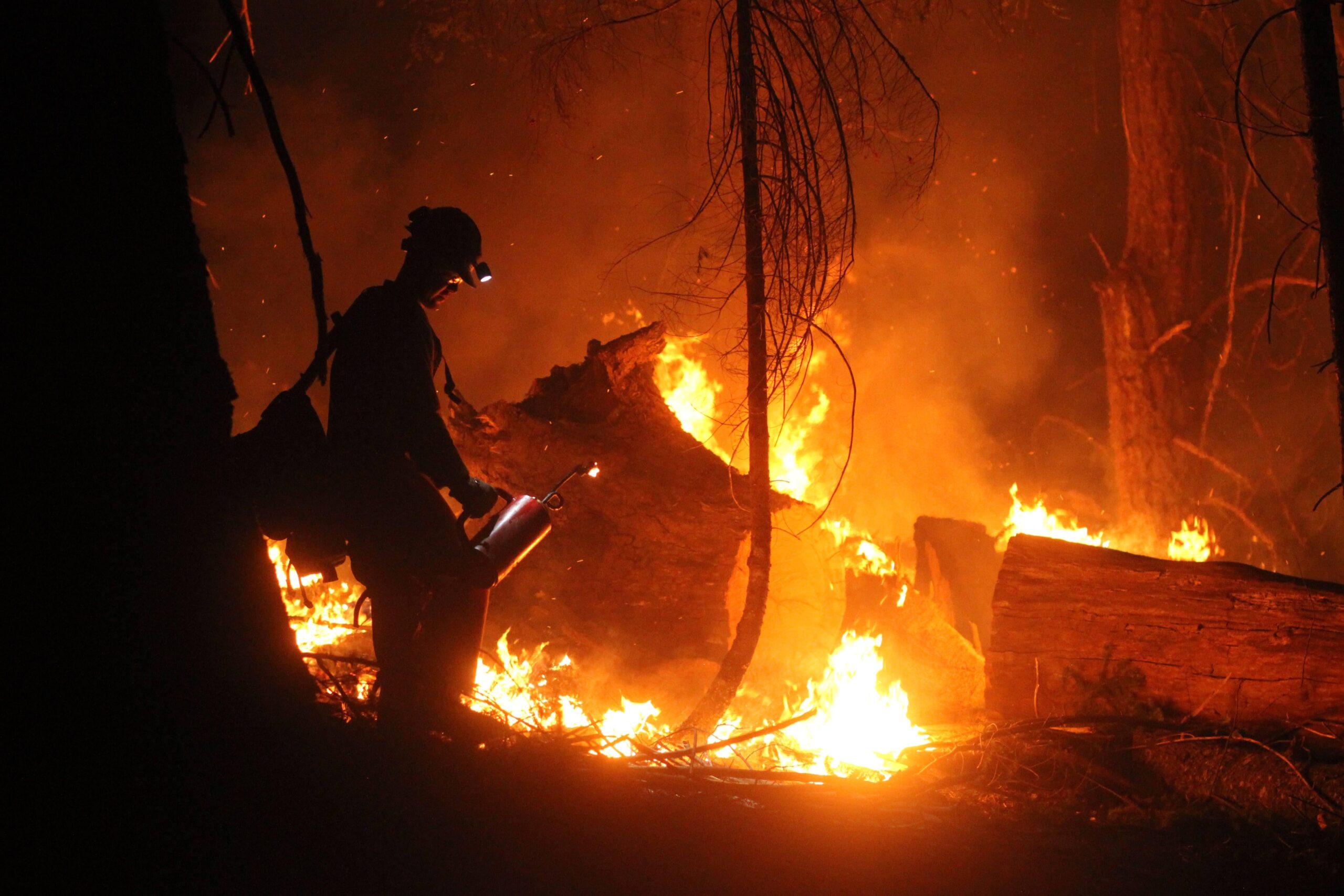
Wildfires
Wildfires devastate homes, livelihoods and communities of people worldwide, making them one of the most destructive types of disasters. While climate change fuels the frequency and intensity of wildfires, wildfires themselves fuel climate change, making them uniquely damaging to the planet.
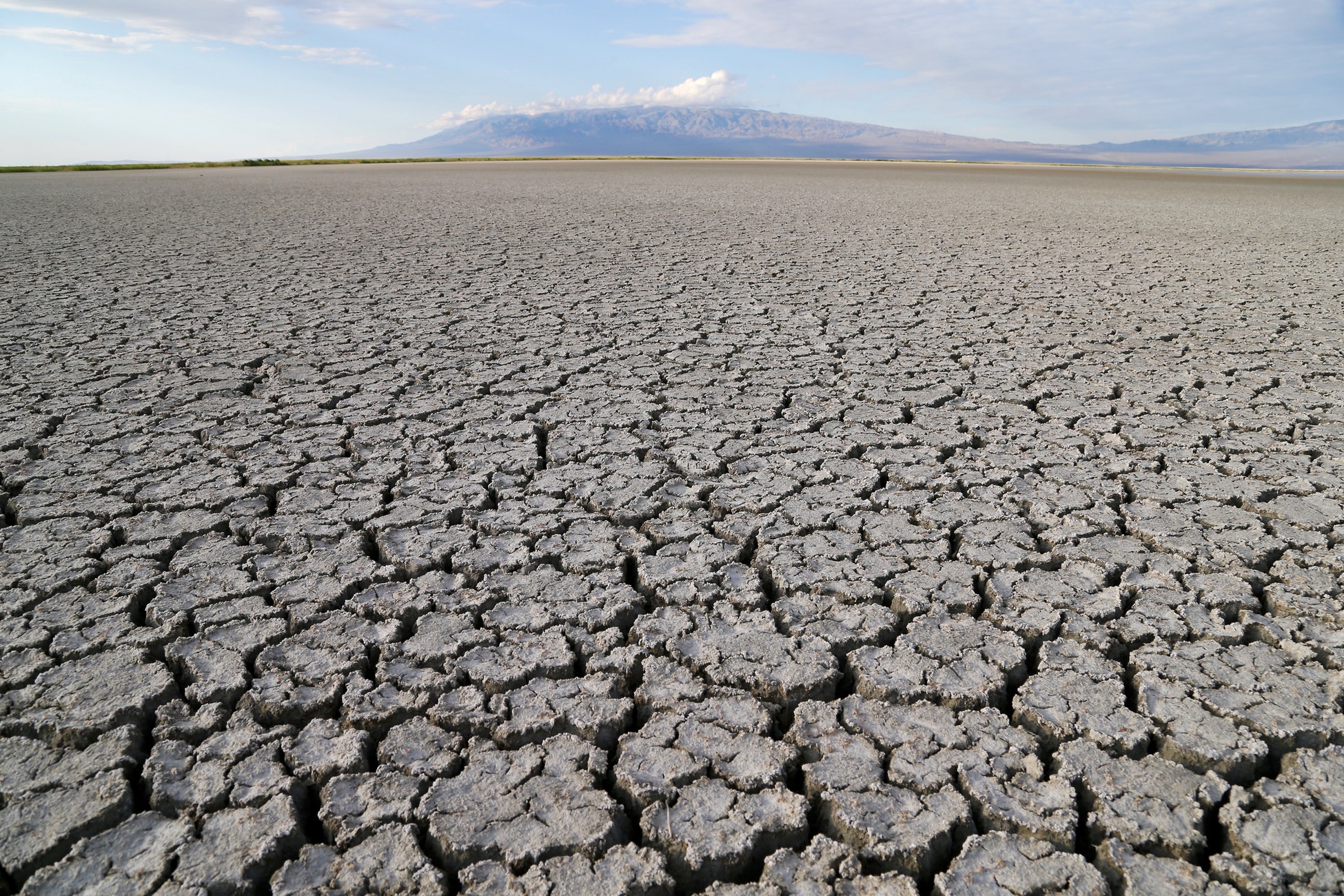
Drought
Drought is often defined as an unusual period of drier than normal weather that leads to a water shortage. Drought causes more deaths and displaces more people than any other disaster.
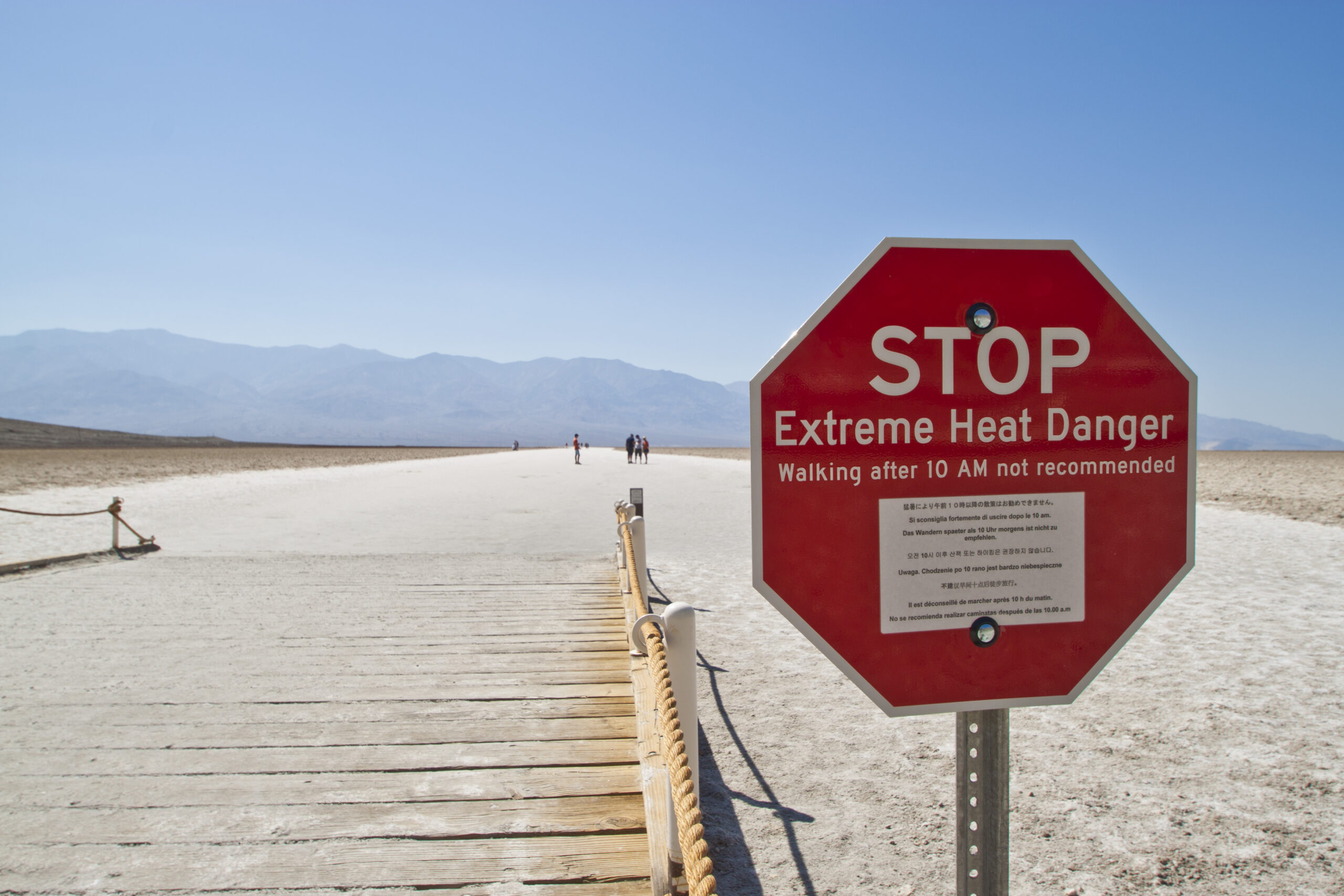
Extreme Heat
While the average temperature continues to increase at a moderate pace, climate change has caused more frequent extreme weather events, particularly extreme heat.